As if exams were not enough
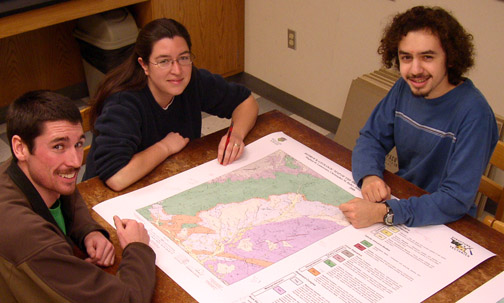
Blue Ridge research team giving one of their geologic maps a critical review.
William & Mary students are in the throes of final exams. It can be a stressful time. The Structure & Tectonics research group had an additional wrinkle added to their end-of-the-semester calendar- a geological research conference to attend. My undergraduate students studying the Blue Ridge Mountains presented the results of their ongoing research at a symposium sponsored by the Virginia Division of Geology and Mineral Resources in Charlottesville last Friday. This conference brought together about 100 scientists from the state and federal government, academics, industry, and the general public. A small conference, but all the experts were in attendance, an ideal venue for a focused discussion on Virginia’s geology.
In addition to studying for and taking exams over the past week, the Structure & Tectonics group was putting the final touches on their geologic maps and cross sections of the Blue Ridge. Many hours refining their digital maps and long hours in the lab.
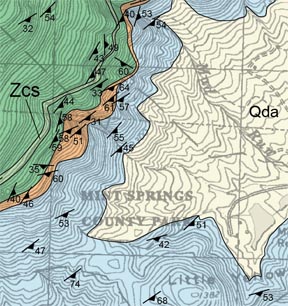
Small part of the Geologic Map of the Crozet 7.5’ quadrangle (map illustrates a 1.5 x 1.5 km area). Different colors represent different rock units exposed at the surface and the dark symbols are rock structures. The light yellow unit (Qda) is underlain by sedimentary deposits formed from debris flows and mudslides.
Over the past few years we’ve focused our research efforts in the southern part of Shenandoah National Park. Our field research has identified a suite of previously unrecognized faults, delineated the position the Great Unconformity, and mapped ancient river terraces formed when central Virginia’s climate was markedly colder than today. Geologic maps are central to understanding the Earth’s crustal structure and unraveling its long history, but they also have practical value. Some rocks are heavily fractured and make productive aquifers providing ample groundwater, whereas other rocks are notoriously poor at yielding groundwater. The minerals in some rock units weather to clays that shrink and swell over time damaging building foundations. Geologic mapping identifies and locates both prospects and hazards alike.
A geologic cross section from the Geologic Map of the Browns Cove 7.5’ quadrangle. The blue unit (Ymg) is a granite that is overlain by the Swift Run Formation (Zsr) and the Catoctin Formation (Zc). Notice the units have been folded and faulted.
Adam Gattuso (’09), Meghan Lamoreaux (’08), and Graham Lederer (’09) displayed and discussed their geologic wares in an afternoon poster session. I gave a talk in the morning session discussing the timing of tectonic activity in the Blue Ridge. We also unveiled our latest Google Earth map of Shenandoah National Park that can be downloaded as a Google Earth .kml file from William & Mary’s Geology of Virginia website (http://web.wm.edu/geology/virginia/ge.php) which enables the viewer to see the geology draped over the topography and ‘fly’ over the region as well as tilt, pan, and zoom.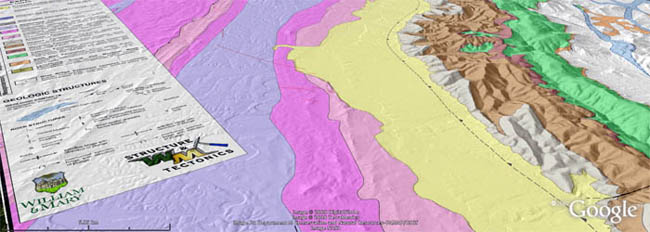
Oblique image of geologic map and explanation in Google Earth (view is to the northeast). Width at the bottom of image is ~20 km. Blue Ridge Mountains on the right and Shenandoah Valley in the center. Notice the W&M product placement!
T’was a long day’s journey into night (we left Williamsburg at 5:45 a.m. and returned at 9 p.m.), but a worthwhile journey all the same. Just another in a long list of academic adventures for William & Mary geologists. Back to thinking about exams!

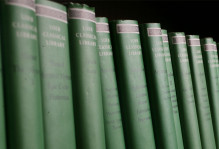
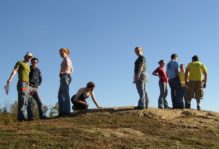
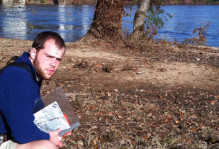
No comments.
Comments are currently closed. Comments are closed on all posts older than one year, and for those in our archive.